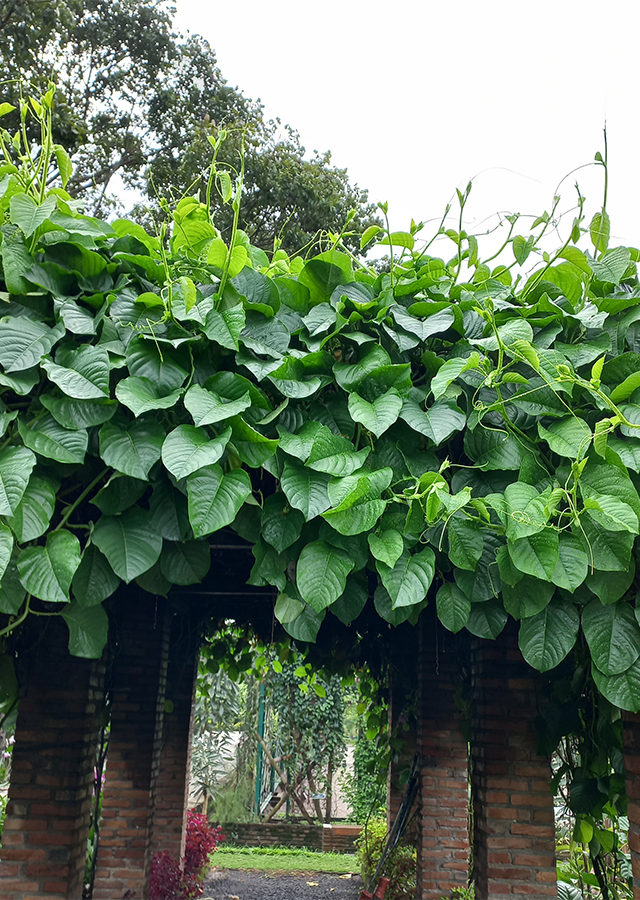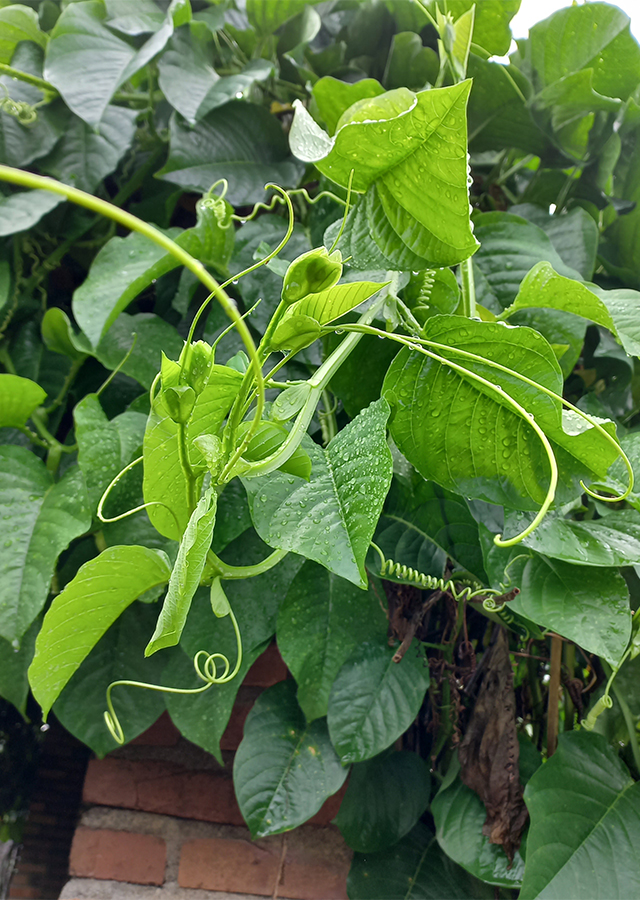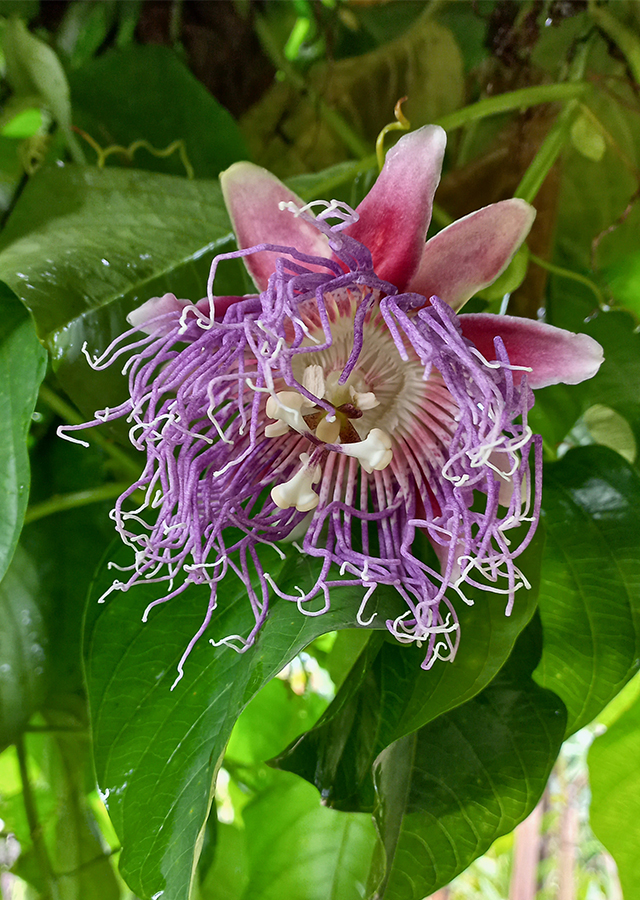Traditional Herbs from Passiflora quadrangularis
difficulty_sleeping
- Take all parts of the plant, 5-15 g of large passion fruit, then wash them until clean.
- Boil them in water until boiling.
- Strain the boiled product.
- Drink.
ulcers_on_legs" :["Take all the parts of a large passion fruit plant to taste and wash them until clean.
What is Passiflora quadrangularis Looks like??



Parts of Passiflora quadrangularis that could be used
- Leaves", "Flowers", "Fruits", "Roots", "All Parts of the Plant
Passiflora quadrangularis Distribution
Large passion fruit comes from Northern Brazil, Northeastern Brazil, Southern Brazil, Southeastern Brazil, West-Central Brazil, Colombia. This fruit can be consumed directly as fresh fruit or processed into fresh juice drinks. The fruit and flowers are also used in making cosmetics. Apart from that, this passion fruit plant is also beneficial for health and is used in traditional medicine to cure various diseases such as asthma, diarrhea, dysentery, asthma, neurasthenia and insomnia.Agroecology of Passiflora quadrangularis
Large passion fruit plants grow in hot, wet, low to temperate plains in tropical to subtropical climates. Grows better at altitudes between 200 - 500 m. Plants require temperatures no lower than around 16 °C� when flowering to ensure fruit sets. They can be damaged if the temperature drops much below 10 °C. Requires humus-rich, moist but well-drained soil and a position in the shade. Prefers near-neutral soil, disliking very acidic or very alkaline conditions. Passiflora species tend to flower and fruit more freely when grown in soil of moderate fertility.
Morphology of Passiflora quadrangularis
- Root\u00a0root system is a tap root (radix primaria) with sympodial branching type
- Wet stem (herbaceus) with a little woody at the bottom. Stem has 4 angles, wings protrude at the corners. Tendrils are located in the axils, with round stipules egg-like leaves (up to 3.5 cm in size).
- Broad oval to oblong-ovate leaves, long 10-20 cm long and 8-15 cm wide, arranged alternately along the stem, rounded at the base, becoming sharply pointed at the tip, with visible concave veins on the upper surface, and protruding at the bottom.
- Flowers solitary and fragrant. Each flower is about 12 cm in diameter, has bell-shaped petals, 5 sepals greenish on the outside while whitish, pink or purplish on the inside; young, measuring about 4.5 cm long; corona filaments purple, white and blue.
- Fruit is melon-shaped, oval, aromatic, measuring about 10 - 30 cm long and 15 cm wide. The surface of the fruit may be elongated with 3 lobes or ribbed, the skin is greenish white to pale yellow and thin. The flesh is white or pink and about 4 cm thick,\u00a0the central cavity contains juice and yellowish sweet and sour pulp.
- Chocolate.
Cultivation of Passiflora quadrangularis
Propagates by seeds and cuttings. Seeds are best sown as soon as they are ripe along with the pulp which will help break down the seed coat and speed up germination. Young shoot cuttings, taken at the node. Cuttings root best in neutral to slightly acidic compost, but 100% sharp sand also produces good results. Cuttings from mature wood are taken at a node.
Passiflora quadrangularis, more details :
Chemical Content of Passiflora quadrangularisAlkaloids, glycosides, flavonoids. essential oils, gynocardin (cyanogenic glycosides), alkaloids-carbolines, and benzoflavones, hydrocyanic acid, norepinephrine, 5-hydroxytryptamine, cyclopropane triterpene glycosides.�
Benefits of Passiflora quadrangularis
Treating liver complaints, headaches, asthma, diarrhea, dysentery, neurasthenia and insomnia, worm medicine and ulcers. It has properties as an analgesic, antiscorbutic, antispasmodic, astringent, diaphoretic, hypnotic, narcotic, sedative and vasodilator.
Simplisia of Passiflora quadrangularis
- Prepare large passion fruit leaves, wash them thoroughly with running water then drain them.
- Dry them in the sun or in an oven at a temperature\u00a040\u00b0C until the water content\u00a010%.
- Blend them using a blender until they become a sifted powder with 60 mesh sieve.
- Store in a clean and airtight place.
Another Facts for Passiflora quadrangularis :
Synonym of Passiflora quadrangularisPassiflora grandiflora Salisb., Passiflora macrocarpa Mast., Passiflora sulcata Jacq.
Habitus of Passiflora quadrangularis
Creepers. Vines, 15-45 m high
Habitat of Passiflora quadrangularis
- Forest
- Land
No comments:
Post a Comment